How to Create a Safe Socialization Space for Cats
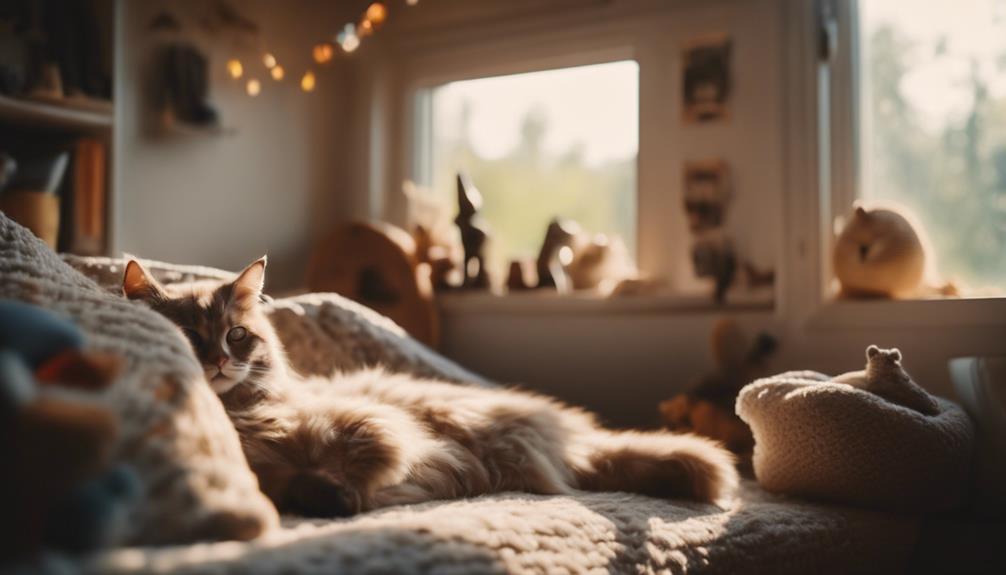
Creating a safe socialization space for cats involves several key considerations. First, it's important to provide separate areas for each cat to retreat to when needed, such as high perches or hiding spots. This allows cats to have their own space while still being able to interact with others. Additionally, providing plenty of vertical space, such as cat trees or shelves, can help cats feel more comfortable and confident in their environment.
Another important aspect of creating a safe socialization space is to provide multiple litter boxes, food, and water dishes in different locations to prevent resource guarding and reduce competition. It's also essential to have plenty of toys and scratching posts to keep cats mentally and physically stimulated.
By incorporating these elements into your cat socialization space, you can help foster positive interactions and harmonious relationships among your feline friends.
Setting Up Safe Spaces
When creating safe spaces for cats, it's essential to provide secluded areas where they can retreat and feel secure. Safe hideaways and cozy nooks are crucial for cats to have a space where they can relax without feeling exposed. These areas should be equipped with comfortable resting spots and elevated perches to allow the cats to observe their surroundings while feeling safe and secure.
Placing these hideaways in quiet corners or under furniture can provide the cats with a sense of privacy and protection, which is essential for their well-being. Cats often seek out high perches as it gives them a vantage point to survey their environment, making elevated spots a preferred choice for safe spaces.
Providing Interactive Toys
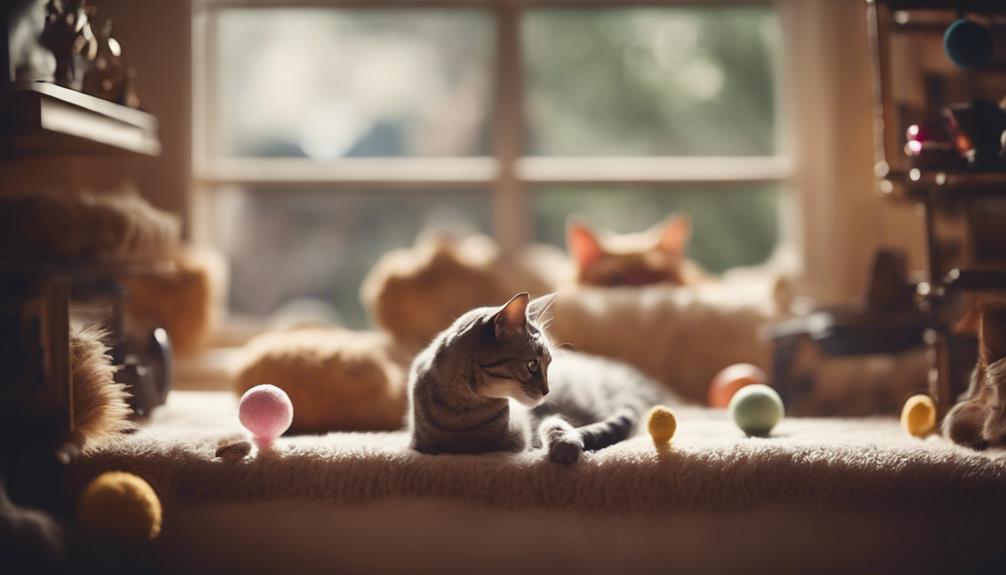
Cat owners can keep their feline friends engaged and mentally stimulated by offering a variety of interactive toys. Providing toys that encourage natural behaviors like hunting and stalking can help prevent boredom and promote physical activity.
Rotating toys regularly can keep the cat's interest piqued and ensure they're constantly entertained.
Toy Variety for Enrichment
To enrich a cat's environment and provide mental stimulation, incorporating a variety of interactive toys is essential. Cats benefit from toy rotation and a structured playtime schedule.
Interactive puzzle feeders and treat dispensers can engage their natural hunting instincts and keep them mentally sharp. Puzzle feeders offer both mental and physical stimulation, encouraging cats to work for their food, which can prevent boredom and obesity.
Treat dispensers provide a fun challenge and reward system, promoting active play and mental engagement. By offering a range of interactive toys, from feather wands to laser pointers, owners can cater to their cat's preferences and keep playtime exciting.
Rotation to Prevent Boredom
Ensuring your feline companion stays mentally engaged and entertained can be achieved through a strategic rotation of interactive toys. To prevent boredom, consider the following:
- Activity schedules: Establish a consistent playtime rotation to keep your cat stimulated.
- Stimulating environments: Create a dynamic space with different toys and objects that encourage exploration.
- Mental stimulation: Use puzzle feeders or toys that challenge your cat's problem-solving skills.
- Variety in play: Rotate toys regularly to maintain your cat's interest and prevent monotony.
Encouraging Positive Interactions
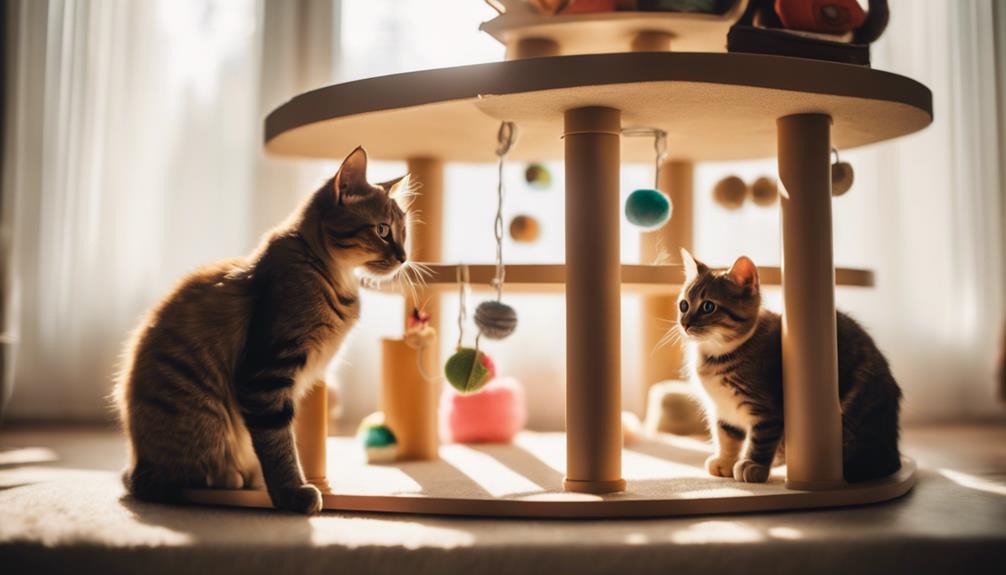
Encouraging harmonious interactions among feline companions is pivotal in fostering a conducive social environment for cats. Positive reinforcement plays a significant role in shaping their behavior towards one another. When cats display friendly behaviors such as mutual grooming or playful interactions, rewarding them with treats or verbal praise can reinforce these positive actions.
Additionally, incorporating play therapy into their socialization routine can help strengthen their bond. Interactive toys, such as feather wands or puzzle feeders, can encourage cats to engage in activities together, promoting camaraderie and reducing potential conflicts.
Creating opportunities for positive interactions through structured play sessions can also help cats build trust and establish a sense of companionship. By engaging in activities that stimulate their natural instincts, such as hunting or chasing, cats can learn to associate these experiences with each other in a positive light. Consistency in providing positive reinforcement and engaging in play therapy can ultimately foster a harmonious relationship among feline companions.
Establishing Routine Socialization Sessions
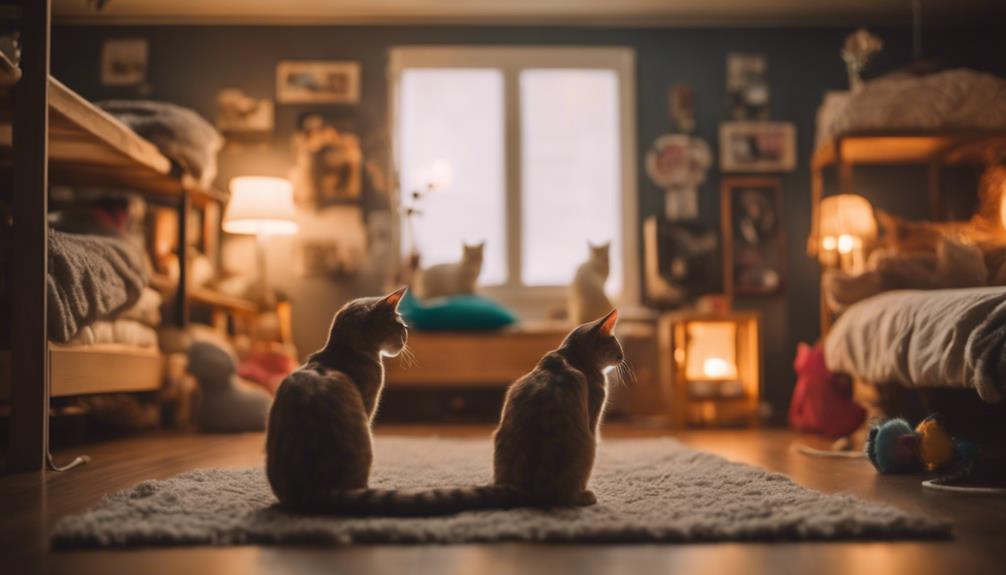
Establishing a consistent schedule for socialization sessions can help cats feel secure and build strong bonds with their feline companions. Here are some practical tips for creating a routine that promotes mental stimulation and bonding time:
- Consistency is Key: Stick to a regular socialization schedule to provide a sense of stability for your cats.
- Set Aside Playtime: Incorporate daily play sessions into your routine to keep your cats engaged and mentally stimulated.
- Bonding Time: Use these sessions to strengthen the bond between your cats and yourself or other feline companions.
- Be Patient and Understanding: Understand that each cat has its own pace, so be patient and allow them to adjust to the socialization sessions gradually.
Creating Vertical Space Options
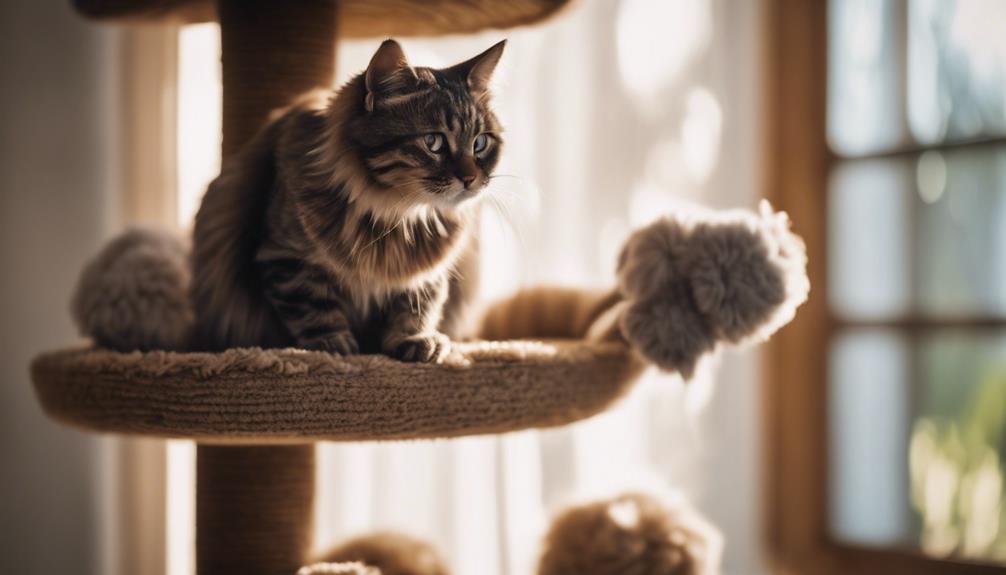
Cats thrive in environments that offer them plenty of vertical space options. Providing cat trees for climbing, wall-mounted shelves, and cozy window perches can greatly enhance their living space.
These options allow cats to satisfy their natural instinct to climb, perch, and observe their surroundings from a safe vantage point.
Cat Trees for Climbing
To provide your feline friend with an engaging and safe environment, consider incorporating cat trees for climbing to enhance their vertical space options. Cat trees offer various benefits such as promoting exercise, reducing stress, and providing mental stimulation for your beloved pet.
Here are some features to look for when choosing a cat tree:
- Treehouse hideaways for a sense of security
- Cozy nooks for your cat to relax in
- Climbing challenges to keep them active
- Feline fun elements like dangling toys or scratching posts
Wall-Mounted Shelves
Considering the importance of providing vertical space options for your cat's enrichment and well-being, wall-mounted shelves offer a practical and space-saving solution. Cats naturally love to climb and explore, and these shelves provide them with an opportunity to satisfy their climbing instincts indoors.
In addition to creating more space for your feline friend to roam, wall-mounted shelves can also serve as DIY scratching posts, encouraging appropriate scratching behavior and saving your furniture. By strategically placing these shelves at different heights, you can help your cat feel more secure in their environment, providing them with cozy hideaways where they can observe their surroundings from a safe vantage point.
This enrichment not only adds to their physical well-being but also contributes to their mental stimulation and overall happiness.
Window Perches for Sunning
For cat owners looking to enhance their feline friend's indoor environment, window perches can provide a cozy spot for sunning and observing the world outside. Cats love basking in the warm sun while feeling the fresh breeze on their fur from a high vantage point. Installing window perches can offer various benefits, including:
- Sunny Lounging: Giving your cat a sunny spot to relax can boost their mood and overall well-being.
- Cozy Corners: Cats enjoy snuggling up in comfortable, elevated spaces, and window perches provide the perfect nook for this.
- Bird Watching: Watching birds or outdoor activities can entertain and mentally stimulate your cat.
- Privacy and Safety: Window perches offer a secure place for your cat to retreat while still enjoying the view.
Monitoring Body Language Cues
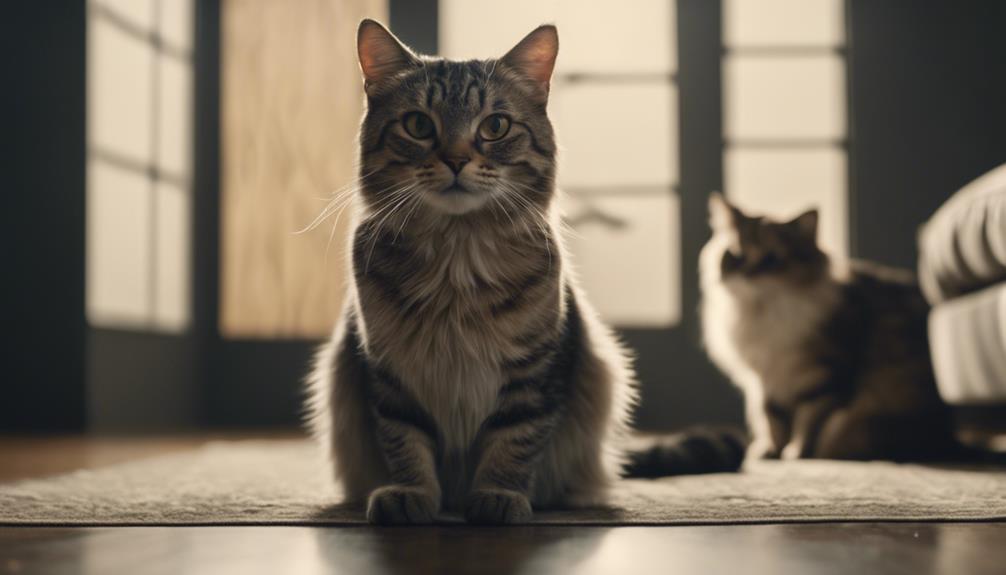
Regularly observing a cat's body language is essential for creating a safe socialization space and understanding their comfort levels. Reading a cat's body language can provide valuable insights into their emotions and help prevent any potential conflicts or stress. Recognizing cues for play, relaxation, fear, or aggression can guide interactions with the feline friend and ensure a positive experience for both the cat and its human companions.
| Body Language Cue | Meaning | Action to Take |
|---|---|---|
| Ears Forward | Alertness or interest | Engage in gentle play or interaction |
| Tail Up | Confidence and happiness | Offer treats or gentle petting |
| Hissing or Growling | Aggression or fear | Give space and time to calm down |
| Purring | Contentment | Continue with positive interactions |
| Hiding | Fear or discomfort | Provide a quiet and safe space |
Implementing Desensitization Techniques
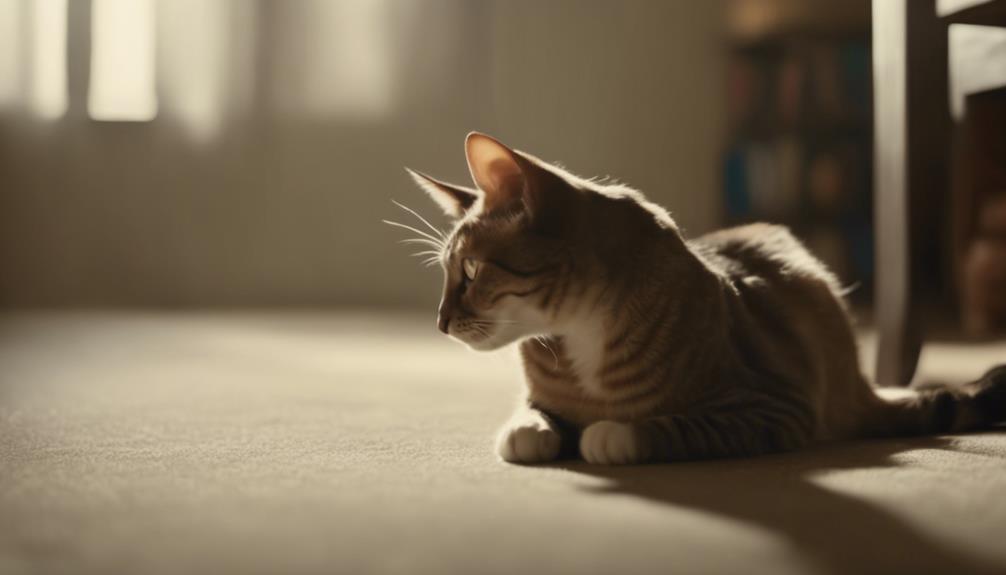
When desensitizing a cat for socialization, gradually expose them to the triggers that cause stress or fear in a controlled and positive manner. This process helps the cat build tolerance and confidence in situations that would typically provoke anxiety.
Here are some key points to consider when implementing desensitization techniques:
- Start Slow: Introduce the trigger at a distance or intensity level that doesn't immediately cause fear.
- Use Positive Reinforcement: Reward the cat with treats or praise when they remain calm during exposure.
- Monitor Desensitization Progress: Keep track of how the cat reacts to the trigger over time to gauge improvement.
- Seek Professional Guidance: Consider consulting with a veterinarian or animal behaviorist for specialized behavior modification techniques.
Frequently Asked Questions
How Can I Help My Cat Feel More Comfortable Around New People or Animals in a Socialization Space?
Helping a cat feel comfortable around new people or animals in a socialization space involves observing body language, using positive reinforcement, providing environmental enrichment, and gradually exposing them to new stimuli. It's crucial for building trust and reducing anxiety.
Are There Any Specific Types of Interactive Toys That Are Recommended for Socializing Cats?
Interactive toys and enrichment activities are essential for socializing cats. They provide mental stimulation and help build positive experiences. Incorporating toys that encourage play and interaction can help cats feel more comfortable and engaged in a socialization space.
What Are Some Signs That My Cat Is Not Enjoying the Socialization Session and How Can I Address This?
If a cat shows signs of discomfort during socialization, like flattened ears or hissing, it's crucial to stop and assess. Redirecting attention with toys or treats can help. Understanding feline body language and communication cues is essential.
How Often Should I Schedule Socialization Sessions for My Cat to Ensure They Are Successful?
In ensuring successful socialization sessions for cats, scheduling them regularly is crucial. Pay attention to behavioral cues indicating discomfort and adjust accordingly. Reward positive interactions to reinforce good behavior, fostering a safe and enjoyable socialization space for your feline companion.
Can I Use Treats or Other Rewards to Encourage Positive Interactions During Socialization Sessions?
Using play, treats, and positive reinforcement can encourage positive interactions during socialization sessions. By creating boundaries and introducing stimuli gradually, cats can feel safe and comfortable, leading to successful socialization experiences.











